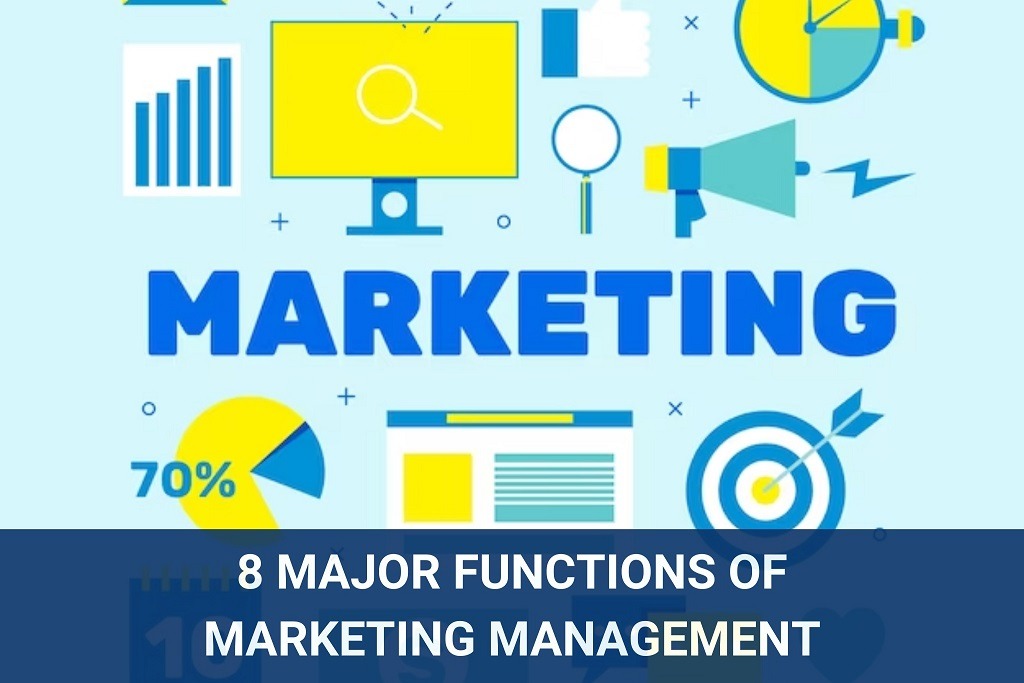Marketing shapes how businesses connect with customers and achieve growth. Every successful company relies on strategic marketing to build relationships, generate sales, and maintain competitive advantage. Resources like Heygom provide valuable insights into modern marketing strategies that help businesses thrive in today’s digital landscape.
Marketing encompasses much more than advertising or promotions. It involves a comprehensive system of activities that work together to deliver value to customers while achieving business objectives. Understanding the eight functions of marketing helps organizations create cohesive strategies that address every aspect of the customer journey.
These functions form the backbone of any effective marketing strategy. Moreover, they provide a framework for businesses to systematically approach market opportunities and challenges. Let’s explore each function and discover how they contribute to business success.
Product and Service Management
Product and service management stands at the heart of marketing success. This function involves developing, maintaining, and improving offerings that meet customer needs. Companies must continuously evaluate their products to ensure they remain relevant and competitive.
Additionally, this function includes identifying gaps in the market and creating solutions that fill those gaps. Businesses conduct market research to understand customer preferences and pain points. They then use this information to guide product development decisions.
Furthermore, product management extends beyond creation to include ongoing improvements. Companies gather customer feedback and monitor market trends to refine their offerings. This continuous improvement cycle helps businesses maintain their competitive edge and customer satisfaction.
Pricing Strategies
Pricing directly impacts profitability and market positioning. This marketing function requires careful analysis of costs, competition, and customer perceptions of value. Companies must balance the need for profit with customer affordability and market expectations.
Different pricing strategies serve various business objectives. For instance, penetration pricing helps new businesses enter competitive markets. Meanwhile, premium pricing positions products as high-quality or luxury items. Therefore, choosing the right pricing strategy becomes crucial for market success.
Dynamic pricing has become increasingly important in digital markets. Businesses now adjust prices based on demand, competition, and customer behavior. However, they must maintain transparency and fairness to preserve customer trust.
Distribution and Channel Management
Distribution ensures products reach customers efficiently and cost-effectively. This function involves selecting appropriate channels, managing logistics, and optimizing supply chains. Companies must decide whether to sell directly to consumers or through intermediaries.
Channel management has evolved significantly with e-commerce growth. Businesses now operate across multiple channels simultaneously. They coordinate online and offline sales to create seamless customer experiences. Consequently, effective distribution management becomes more complex but also more critical.
Moreover, distribution decisions affect brand perception and customer satisfaction. Fast, reliable delivery has become a competitive advantage. Companies invest heavily in distribution infrastructure to meet rising customer expectations for convenience and speed.
Promotion and Marketing Communications
Promotion communicates value propositions to target audiences. This function encompasses advertising, public relations, sales promotions, and digital marketing. Businesses must craft compelling messages that resonate with their intended customers.
Integrated marketing communications ensure consistency across all promotional channels. Companies coordinate their messaging across social media, email, traditional advertising, and other platforms. Therefore, customers receive unified brand experiences regardless of how they interact with the business.
Digital transformation has revolutionized promotional strategies. Social media marketing, content marketing, and influencer partnerships offer new ways to reach audiences. However, businesses must carefully select channels that align with their target market preferences and behaviors.
Selling and Sales Management
Selling converts interest into actual purchases. This function includes personal selling, sales team management, and sales process optimization. Effective selling requires understanding customer needs and demonstrating how products solve their problems.
Sales management involves training, motivating, and supporting sales teams. Companies develop sales methodologies and provide tools that help representatives succeed. Additionally, they establish performance metrics and incentive structures that drive desired behaviors.
Technology has transformed selling processes. Customer relationship management systems help track interactions and personalize approaches. Furthermore, virtual selling tools enable remote sales conversations, expanding market reach while reducing costs.
Marketing Information Management
Information management provides insights that guide marketing decisions. This function involves collecting, analyzing, and interpreting data about markets, customers, and competitors. Companies use various research methods to gather relevant information.
Data analytics has become increasingly sophisticated. Businesses now track customer behavior across multiple touchpoints. They use predictive analytics to anticipate future trends and customer needs. Consequently, marketing decisions become more data-driven and precise.
However, information management must balance data collection with privacy concerns. Companies need transparent data practices that respect customer preferences. They must also ensure data security to maintain customer trust and comply with regulations.
Financing and Financial Analysis
Financing ensures adequate resources for marketing activities. This function involves budgeting, securing funding, and analyzing financial performance. Marketing departments must justify investments and demonstrate return on investment.
Financial analysis helps evaluate marketing effectiveness. Companies track metrics like customer acquisition costs and lifetime value. These insights inform resource allocation decisions and strategy adjustments. Therefore, financial management becomes integral to marketing success.
Moreover, financing extends to customer payment options. Businesses offer various payment methods and credit terms to facilitate purchases. They balance accessibility with financial risk management to optimize sales and cash flow.
Risk Management
Risk management protects businesses from potential marketing-related losses. This function identifies, assesses, and mitigates various risks. Companies must consider market risks, competitive threats, and regulatory compliance issues.
Marketing risks include campaign failures, brand reputation damage, and market shifts. Businesses develop contingency plans and crisis management protocols. Additionally, they purchase insurance and implement quality control measures to minimize potential losses.
Furthermore, risk management involves staying informed about regulatory changes. Companies must ensure marketing practices comply with advertising standards and consumer protection laws. They also monitor competitive activities that could threaten market position.
Read More Also: How to Set Up Your Robotic Vacuum for Maximum Efficiency
Conclusion
The eight functions of marketing work together to create comprehensive business strategies. Product management ensures relevant offerings, while pricing strategies optimize profitability. Distribution channels deliver products efficiently, and promotion communicates value effectively. Selling converts interest into sales, information management provides crucial insights, financing enables marketing activities, and risk management protects against potential losses.
Understanding these functions helps businesses develop integrated marketing approaches. Each function supports and reinforces the others, creating synergies that drive success. Therefore, companies must consider all eight functions when developing marketing strategies.
Ultimately, mastering these marketing functions enables businesses to build strong customer relationships and achieve sustainable growth. As markets evolve, these fundamental functions remain essential for connecting with customers and delivering value.
Read More Also: How to clear a mud blockage in an external drain
Frequently Asked Questions
What are the main benefits of understanding the eight functions of marketing?
Understanding these functions helps businesses create comprehensive marketing strategies. It ensures all aspects of customer engagement receive attention. Companies can identify weaknesses and opportunities more effectively. This knowledge also improves coordination between different marketing activities and departments.
How do small businesses apply all eight marketing functions with limited resources?
Small businesses can prioritize functions based on immediate needs and growth stage. They often start with core functions like product management and selling. Many functions can be handled simultaneously or outsourced to specialists. Digital tools and automation help small businesses manage multiple functions efficiently without large teams.
Which marketing function is most important for business success?
No single function stands alone as most important. Success requires integration of all functions working together. However, product and service management often serves as the foundation since without valuable offerings, other functions cannot succeed. The relative importance of each function varies based on industry, business model, and growth stage.
How has digital technology changed the eight functions of marketing?
Digital technology has transformed every marketing function significantly. Online channels revolutionized distribution and promotion. Data analytics enhanced information management and decision-making. E-commerce changed selling processes and customer interactions. Technology also introduced new risks while providing tools to manage them more effectively.
Can businesses outsource any of the eight marketing functions?
Yes, businesses commonly outsource various marketing functions. Advertising agencies handle promotion, logistics companies manage distribution, and market research firms provide information management. However, businesses should maintain strategic control and ensure outsourced functions align with overall objectives. Core functions closely tied to competitive advantage typically remain in-house.



